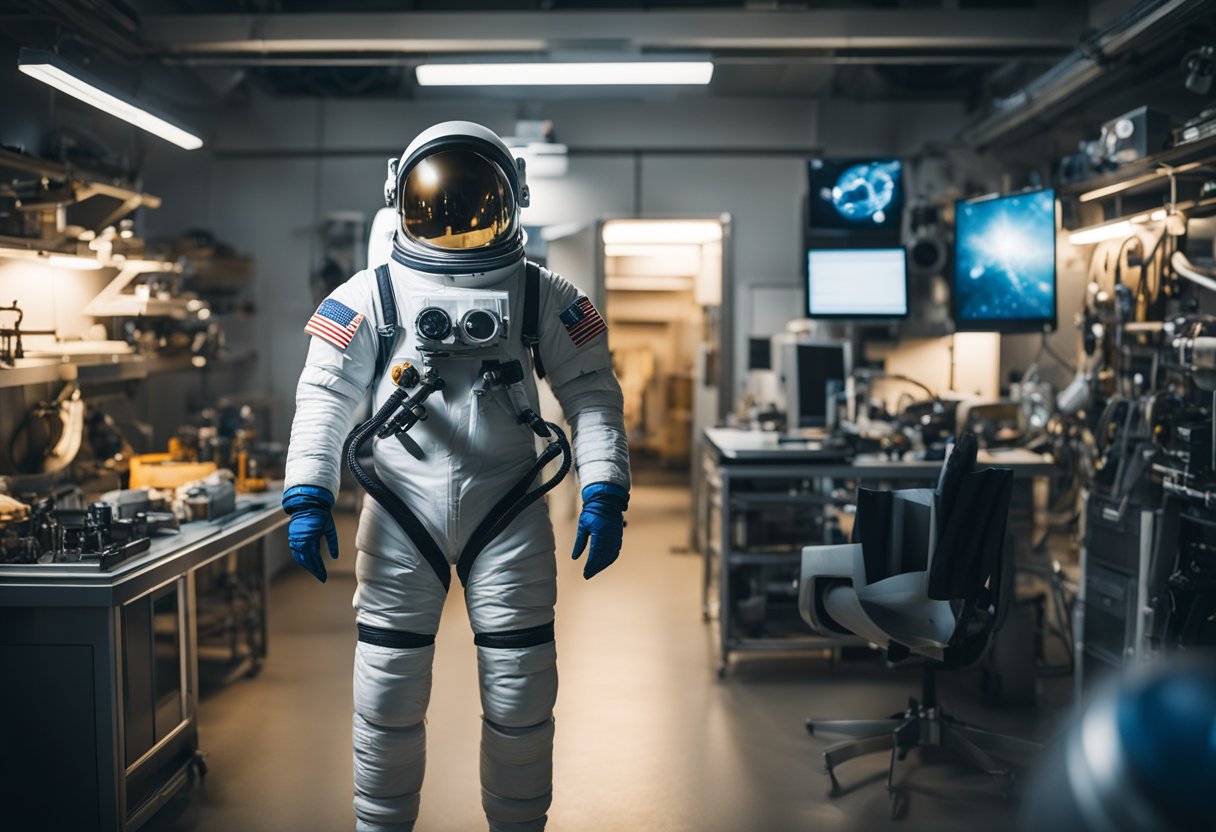
Space tourism, once a mere fantasy, is quickly becoming a reality with the advent of spacewalk tourist expeditions available to private individuals. With these expeditions, tourists not only visit the International Space Station (ISS) but also participate in one of the most extraordinary activities reserved for astronauts: spacewalks. The year 2023 marks a significant milestone in commercial space travel, as we witness contracts being signed that promise the eager space tourists the chance to step outside the ISS and experience the vacuum of space first-hand.
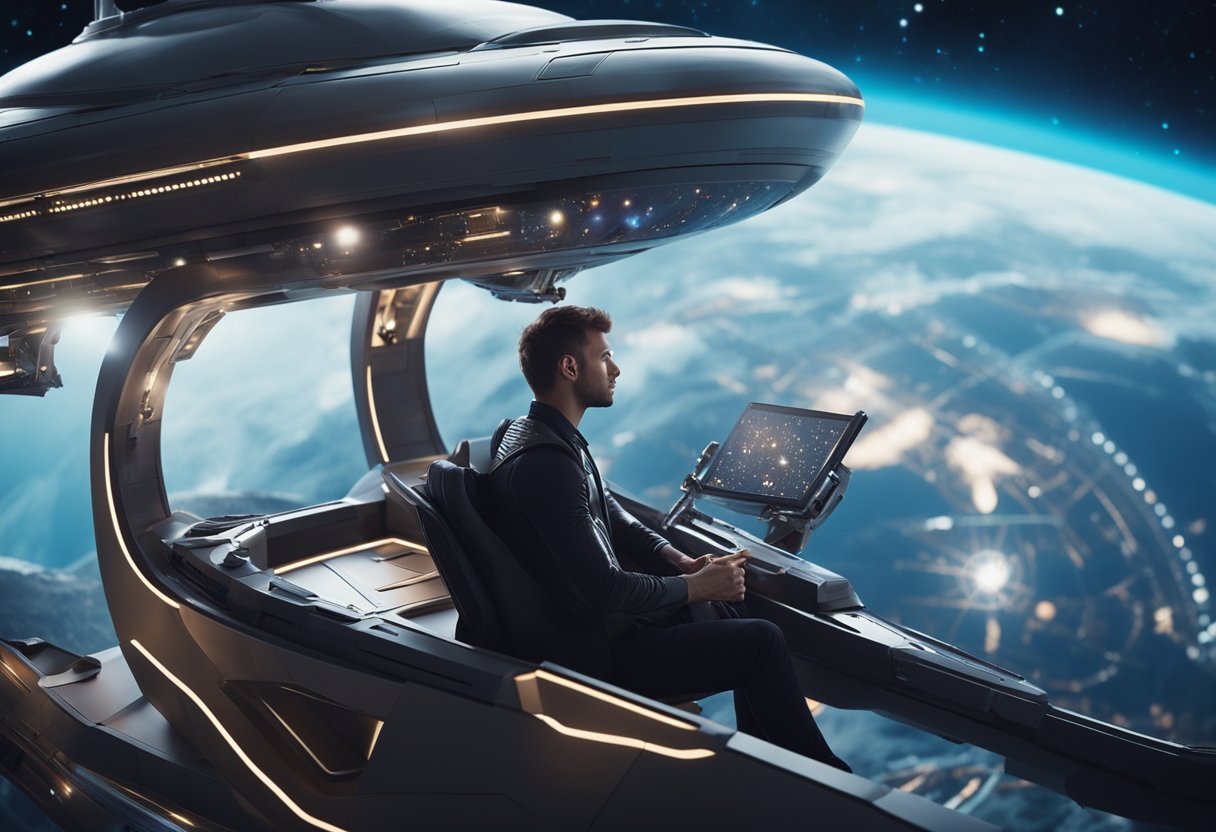
As we reckon with this new frontier, preparation becomes a pivotal aspect of these expeditions. Tourists undergo extensive training to ready themselves for the rigours of zero gravity and the complexity of manoeuvring in a spacesuit. Leading space agencies and private spaceflight companies are teaming up to provide the spacecraft and launch vehicles necessary for these breathtaking journeys, ensuring safety standards are met and experiences are optimised. Our perception of travel is shifting, with the realms of space opening up to non-professional astronauts, offering a unique perspective of our planet from outside its atmosphere.
In this section, we’ll explore the remarkable journey of space tourism from concept to reality, showcasing the key historical milestones and the influential role that private companies have played in this burgeoning industry.
The narrative of space tourism began in earnest when Dennis Tito, an American businessman and former NASA engineer, became the first space tourist in 2001. He secured his passage through Space Adventures, a pioneering company in private space travel, and journeyed to the International Space Station (ISS) aboard a Russian Soyuz spacecraft facilitated by the Russian space agency Roscosmos. This expedition marked the beginning of a new era, where space was no longer exclusive to astronauts.
Following Tito’s landmark voyage, Roscosmos continued to collaborate with Space Adventures to enable a select few other private citizens to visit the ISS, utilising their Energia spacecraft. This collaboration underscored the potential for a broader private space travel market, setting the stage for further advancements and the expansion of the space tourism field.
Private companies have played a pivotal role in transforming space tourism from a distant dream into a viable commercial venture. SpaceX, founded by Elon Musk, has introduced cutting-edge technology and visionary concepts that promise to lower the costs and increase the accessibility of space travel. They are at the forefront of developing reliable and reusable rocket technology, which is crucial for sustainable space tourism.
Space tourism has also been significantly bolstered by the efforts of websites like SpaceVoyageVentures.com, which document and inform the public about available and upcoming space tourism opportunities, helping to spark interest and investment in the sector.
Our thorough examination demonstrates that the synergy between historical achievements and the innovative drive of private companies has firmly established space tourism as an exciting component of future human adventure and exploration.
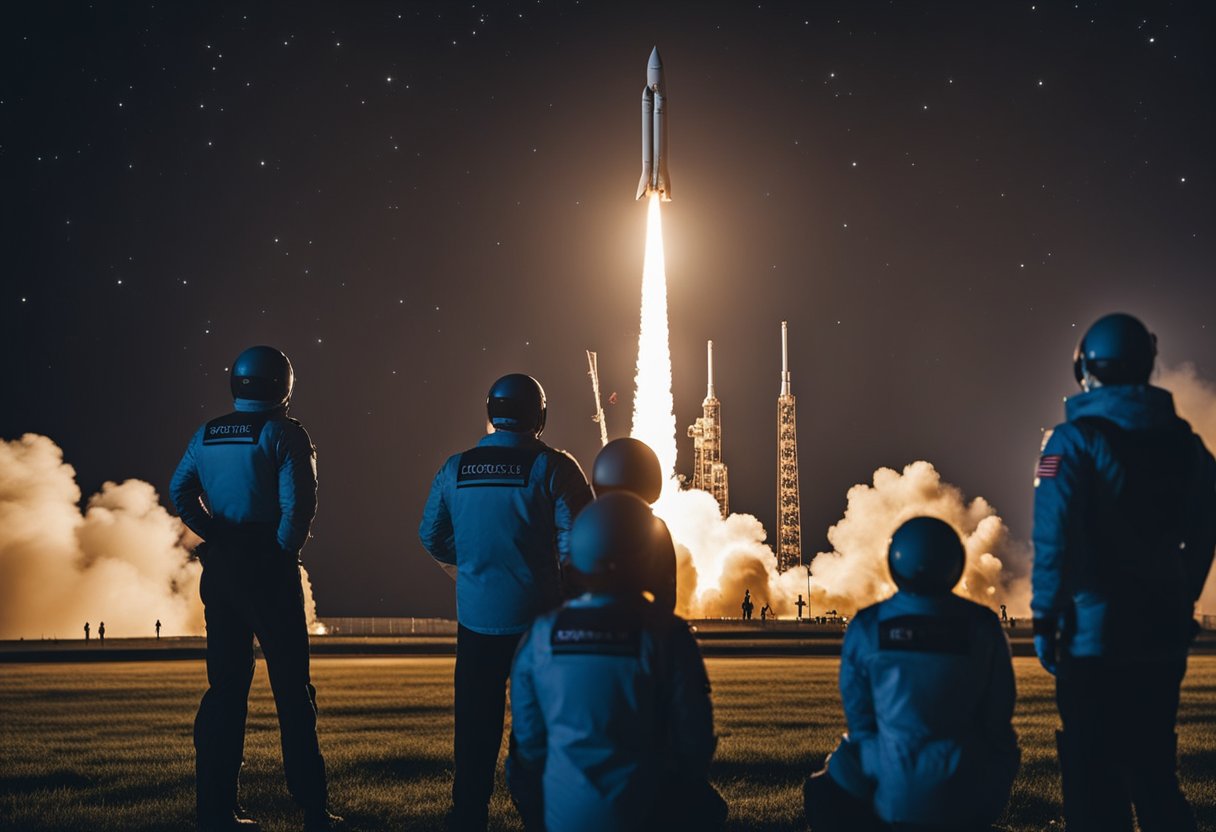
We intend to demystify the complexities and intricacies of conducting a spacewalk, commonly known as an extravehicular activity (EVA). Through this exploration, we aim to give you a clear understanding of its mechanics and the associated challenges.
A spacewalk, or EVA, is when an astronaut steps outside their spacecraft into space. For a spacewalk to occur, astronauts at the International Space Station (ISS) must first enter an airlock. The airlock serves as a small chamber that transitions them from the pressurised environment of the ISS into the vacuum of space. Safety is paramount, so astronauts wear specially designed suits that provide life support and mobility needed for working outside the ISS.
Performing an EVA is not without risks. The void of space presents extreme temperatures, micrometeoroids, and high levels of radiation. Therefore, spacewalkers must wear protective suits that regulate temperature, shield from debris, and block radiation. Ensuring redundant life support systems and secure tethering to the spacecraft are vital safety protocols. Training for these excursions is extensive, allowing astronauts to perform necessary tasks efficiently while minimizing exposure to the harsh environment of space.
Through our exploration at Space Voyage Ventures, we highlight how space tourism evolves, bringing these extraordinary experiences closer to reality for non-professional astronauts.
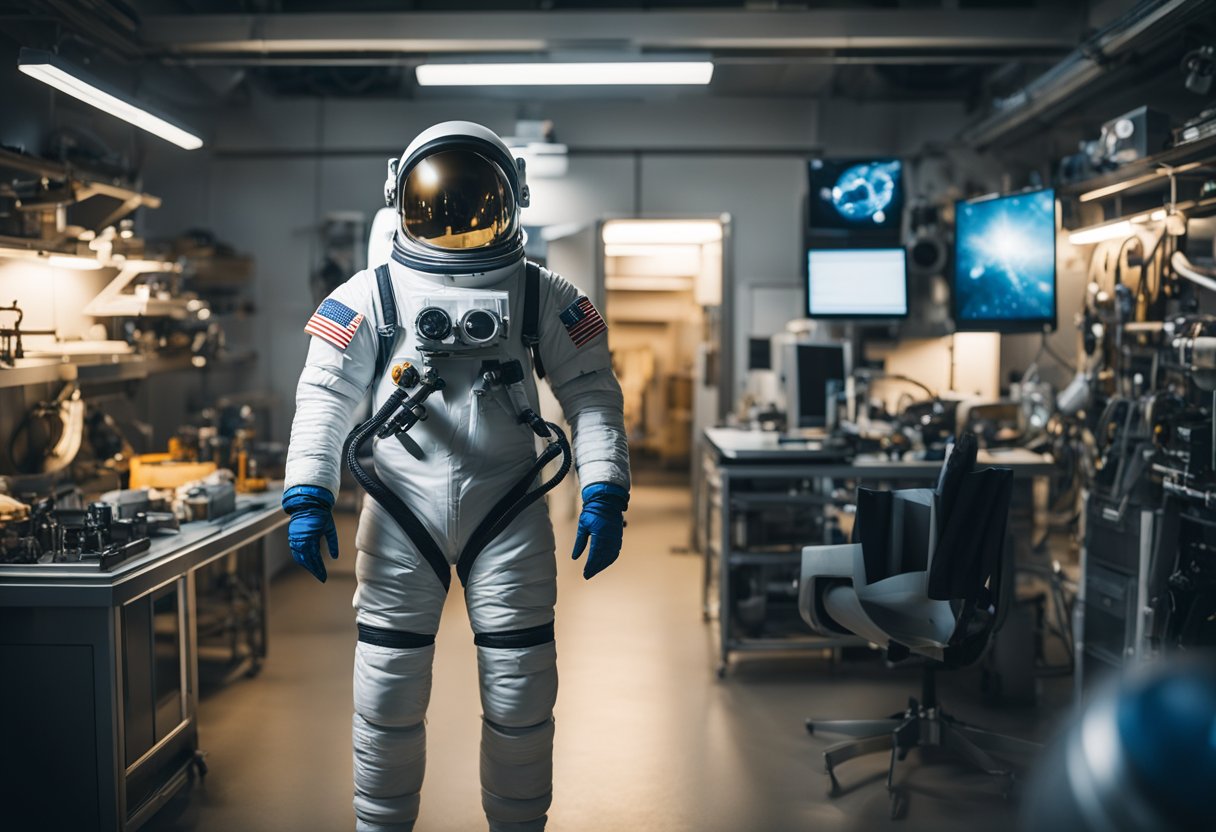
The journey to become a space tourist is an exhilarating opportunity that requires meticulous preparation to ensure safety and maximise the experience. Prospective travellers must meet stringent criteria and undergo specialised training similar to that of professional astronauts.
We understand that not everyone can journey into space as a tourist. The selection criteria are in place to ensure that participants are fit for the rigours of space travel. Space tourists must typically:
Some agencies may also require that applicants pass a basic physical fitness test, owing to the physical demands during launch, re-entry, and spacewalking, if applicable. At SpaceVoyageVentures.com, eligibility clearances come with additional assessments to ensure compatibility with the unique aspects of space tourism.
Our specialised training programme is designed not just to inform but to acclimate future space tourists to the conditions they will face beyond Earth’s atmosphere. Elements of specialised training include:
Pre-flight Training:
Simulations and Practical Exercises:
Strict adherence to these programmes prepares travellers for their journey, equipping them to enjoy the excursion while minimising potential risks. Trainees receive guidance from professional cosmonauts and astronauts to gain firsthand knowledge of navigating space environments.
We at SpaceVoyageVentures.com take pride in guiding our clients through each step of this life-changing venture, ensuring they’re fully prepared and confident in their upcoming spacewalk expedition.
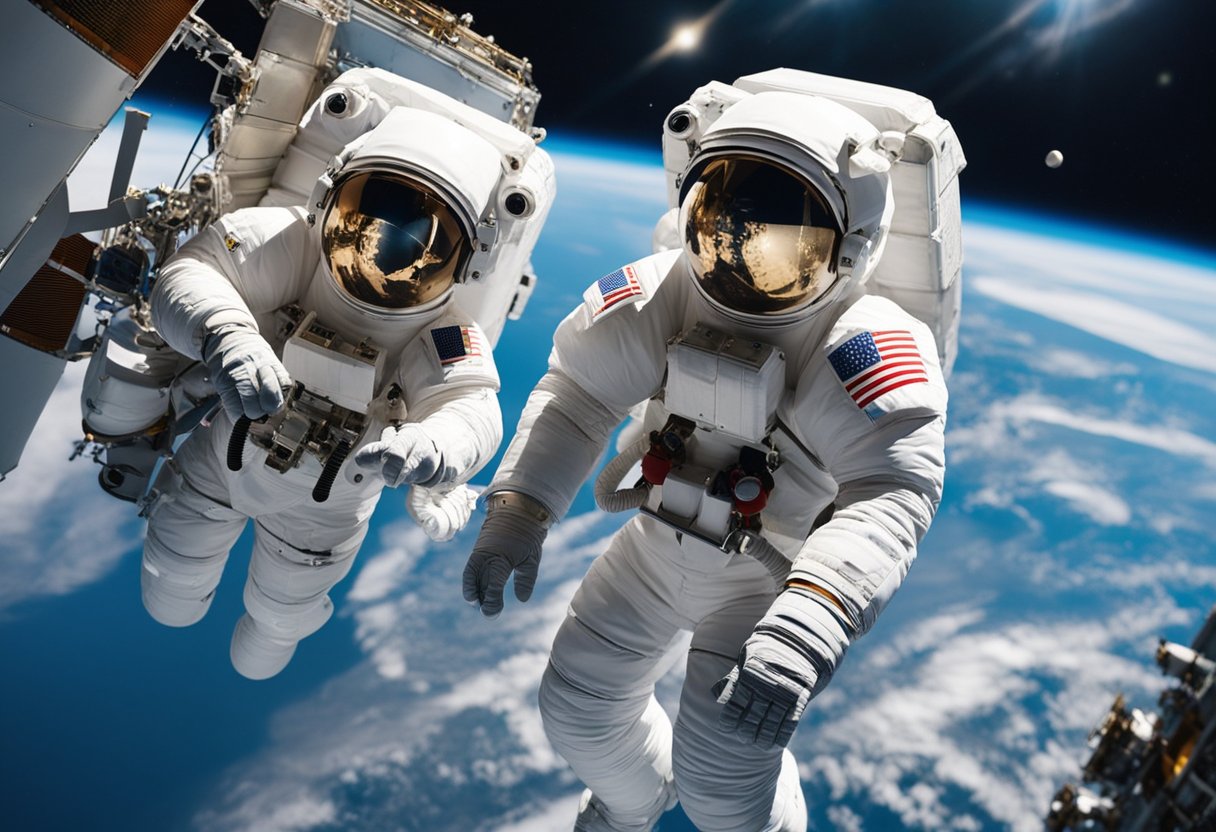
In our journey to make space accessible to civilians, we utilise sophisticated spacecraft and launch vehicles capable of safely transporting spaceflight participants to the International Space Station (ISS).
The Russian Soyuz spacecraft has been a reliable workhorse for human spaceflight since the 1960s. Soyuz can transport up to three astronauts or cosmonauts to the ISS, which makes it an optimal choice for smaller groups of space tourists. It’s renowned for its safety record and cost-effectiveness. The partnership with companies like Space Adventures has paved the way for civilians to experience space travel aboard these vehicles.
On the other side, we have the modern contribution from SpaceX — the Crew Dragon Capsule. This state-of-the-art spacecraft signifies a new era in commercial space travel, offering autonomous operations and a sleek interior design. Crew Dragon can carry up to four passengers, providing a more private and personalised spaceflight experience. It was instrumental in restoring America’s capability to launch astronauts from its soil, marking a significant milestone in space travel history.
Before delving into accommodations and daily routines, it’s important to understand that life aboard the ISS is a unique blend of work and personal time, tightly scheduled to maximise the station’s research potential and maintain its operations.
Living Quarters: Each member of the crew has a small personal area called a sleeping quarters with room for personal belongings like family photos or small mementos. Sleep is facilitated by sleeping bags which can be attached to the walls of the station to prevent drifting due to the microgravity environment.
Amenities: Despite the constraints of space, we maintain a standard of living that includes basic amenities such as a gym, two bathrooms, and a dining area. The ISS is equipped with a water recovery system that recycles a significant percentage of waste water, including urine, into clean water.
Nutrition: Meals on the ISS are pre-prepared and require rehydration or heating. A variety of international cuisines are available, keeping in mind the diverse crew’s preference and dietary requirements.
Scientific Endeavours: The ISS serves as a floating laboratory, and conducting research in space is our primary goal, covering a range of scientific disciplines from biology to physics. The microgravity conditions allow us to perform experiments that would be impossible on Earth.
Maintaining the ISS: Routine maintenance and repair work are crucial, which might involve replacing components of the station’s solar arrays or fixing waste management systems. Such operations sometimes require spacewalks – extra-vehicular activities that can last several hours.
International Collaboration: The Crew Dragon spacecraft, developed by SpaceX, has become a vital part of our operations, ferrying astronauts to and from the ISS in a collaborative effort with NASA. The Russian segment of the ISS is integral, containing the primary living and working quarters and ensuring the station’s orbital stability.
Educational Outreach: Station activities also include educational outreach, sharing our experiences and discoveries with the public to inspire future generations of scientists and explorers.
Our life on the ISS is remarkable and unlike anything possible on Earth. It demonstrates just how much humanity can achieve through international cooperation and dedication to exploration and research.
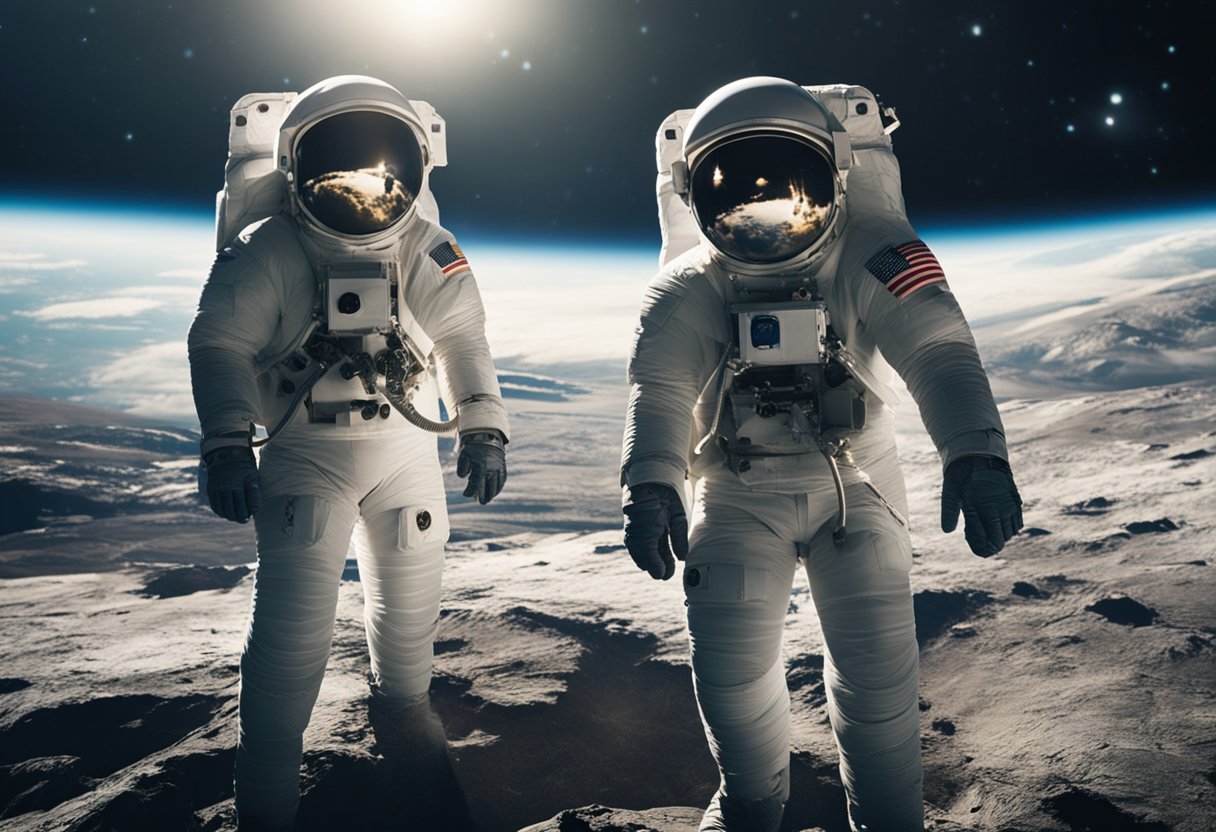
In this section, we explore the financial and regulatory framework that shapes the burgeoning industry of space tourism. From the costs incurred by thrill-seekers to the international treaties governing private spaceflight, understanding these factors is crucial for anyone looking to venture beyond our atmosphere.
The cost of space tourism is often the primary consideration for enthusiasts eager to experience the majesty of space. Currently, a seat on a Soyuz rocket — one of the few spacecraft offering orbital tourist trips — can cost tens of millions of pounds. Private spaceflight companies, however, are working to reduce expenses, crafting contracts that might soon offer more affordable, yet still substantial, price tags.
International agreements play a pivotal role in the governance of space tourism. Notable among them is the Outer Space Treaty, which asserts that outer space should be free for exploration and use by all states. Private entities like RSC Energia, involved in space tourism ventures, must abide by these agreements, which also require states to supervise space activities, including those of non-governmental entities.
It is imperative for companies and participants to understand that space tourism is not merely an adventure but a complex operation regulated by a network of contracts and international law.
Embarking on a journey to orbit Earth is a monumental experience, providing awe-inspiring views and the unique sensation of living in microgravity. Our discussion focuses on these two paramount aspects of space tourism.
As we orbit Earth, the planet’s curvature is a spellbinding spectacle. The grandeur of the oceans, landmasses, and clouds unfurls below us, showcasing the Earth’s diverse topography in a continuous panorama. During the day, watching the transition from land to sea creates a captivating mosaic of colours. At night, our eyes feast on the brilliant twists and turns of city lights, which illuminate the human footprint amidst Earth’s darkened surface.
The experience of microgravity transforms every aspect of daily activities into an extraordinary event. In this unusual state, actions such as eating, sleeping, and moving demand adaptation. Partaking in spacewalks usually includes two astronauts and extends for a substantial duration, requiring meticulous training to manage the complexities of microgravity. As we float freely in the cabin, our familiar understanding of up and down becomes obsolete, inviting us to engage with our surroundings in novel and exhilarating ways.
Each moment spent in orbit is a vivid reminder of the pioneering spirit that propels space adventures and the relentless quest to explore beyond our terrestrial boundaries. Space tourism continues to push the envelope, offering us the privilege to witness Earth’s beauty from a perspective once reserved for a select few.
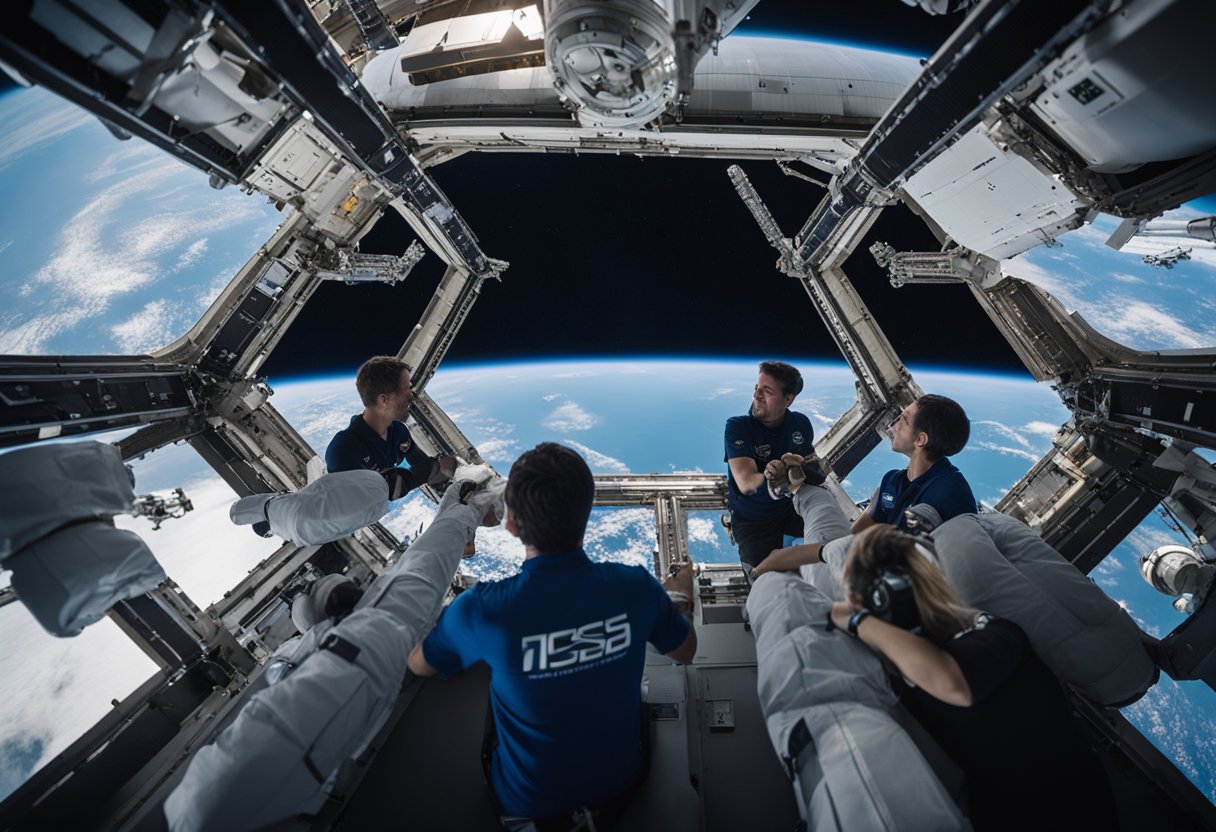
In charting the next steps for spacewalk tourism, we are moving beyond the Earth’s orbit and considering destinations such as the Moon and Mars. This expansion will redefine our experiences with space exploration and underline our commitment to advancing orbital space tourism.
We have set our sights on enabling our clients to embark on expeditions to the Moon soon. These lunar journeys will likely involve activities beyond traditional spacewalks, including potential surface excursions utilising specialised equipment. As for Mars, it represents a more long-term goal, but progress in propulsion and life support technologies might see us realise Martian spacewalks in the coming decades.
Our blueprint for orbital space tourism envisions a comprehensive network of space stations orbiting Earth, the Moon, and eventually Mars. These platforms will act as staging posts for tourists to experience spacewalks in a variety of celestial settings. Our detailed plans focus on ensuring safety, sustainability, and the utmost exhilarating experience for all our space tourists.
In our pursuit to make space tourism a tangible reality, we’ve employed various platforms to keep enthusiasts and the public informed and involved. Through a mix of social media engagement and educational outreach, we’re not just sharing our journey but also inspiring the next generation of explorers.
We actively update our Twitter and Facebook pages with the latest milestones and live events, hosting Q&A sessions and sharing behind-the-scenes content. We’re keen on utilising Instagram as well, not only through our account but by collaborating with the ISS Instagram channel to provide riveting visuals and stories. Space forums and other online communities have also been instrumental, allowing for in-depth discussions and sharing of ideas about our missions and the future of space exploration.
We are committed to fostering a deeper understanding and appreciation for space travel. To achieve this, we collaborate with educational institutions and organisations to deliver seminars and workshops. On NASA TV, we broadcast our missions and include educational segments to elucidate the complexities of space travel. This synergy between practical experiences on the ISS Facebook page and theoretical learnings from experts aids in igniting curiosity and stimulating a proactive learning environment.
Our platform, SpaceVoyageVentures.com, serves as a meticulous record of the burgeoning field of space tourism, spotlighting imminent opportunities for the public to experience space firsthand. Through our comprehensive approach, we aim to demystify space travel and make it more accessible to all.
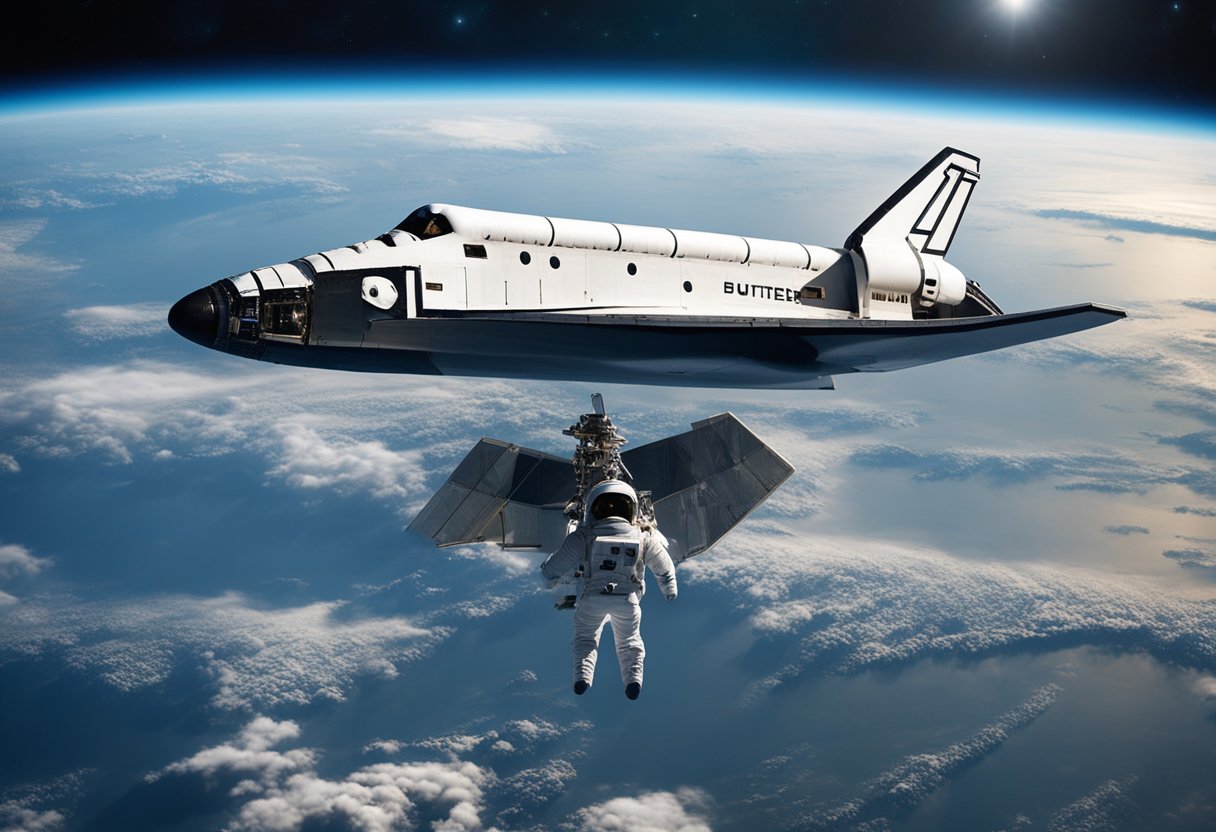
As we embark on spacewalk tourist expeditions, it’s crucial to capture every moment. Our photographic and video documentation efforts are paramount in bringing the celestial experience to life, not only for the spacewalkers but also for posterity and those on Earth.
We take photos to immortalise the extraordinary experience of floating outside the International Space Station (ISS). The images are often shared on our space station blog and the SpaceVoyageVentures.com platform, showing breathtaking vistas of Earth and the intricacies of the ISS. Capturing photos in space is challenging due to the extreme lighting conditions, but our equipment is specifically designed to handle these hurdles, ensuring clarity and colour balance.
Our video highlights offer a dynamic perspective of the spacewalks. We meticulously edit footage to construct a narrative that showcases pivotal moments from the mission. Videos are then uploaded to SpaceVoyageVentures.com for enthusiasts and future astronauts to witness the marvel of space travel. This media serves multiple purposes: educational content, an archive for historical records, and a promotional glimpse into the life of a space tourist.

In this section, we’ll explore how enthusiasts can engage with space tourism through skywatching events and witnessing the awe of rocket launches.
Skywatching events are a thrilling way for the public to be part of space exploration without leaving Earth. They offer unique opportunities for us to observe phenomena such as comet pass-bys, meteor showers, and special appearances of planets. These events are often organised by astronomy clubs, planetariums, and, increasingly, by space tourism companies. Sites like SpaceVoyageVentures.com document these experiences, providing schedules and details for upcoming skywatching events that bring us closer to the cosmos.
Rocket launches are a spectacular display of technology and ambition. Watching a rocket launch is an exhilarating experience that combines anticipation, thrill, and the marvel of human achievement. We find that more space enthusiasts are travelling to launch sites to witness these events firsthand. With the burgeoning space tourism industry, we anticipate that launches involving tourists will become a central attraction. SpaceVoyageVentures.com serves as a testament to this growing interest, chronicling the rocket launches that are part of the tourism packages available for those who dream of space travel.

We’ve compiled some of the key questions many enthusiasts have regarding spacewalk tourism, focusing on practical and safety considerations for those planning to embark on this extraordinary journey.
Spacewalks were temporarily suspended due to fluctuations in market interest and the increased focus on safety protocols. They’ve resumed with enhanced measures to ensure tourist safety.
The cost to participate in a spacewalk expedition with companies like Space Adventures can be quite substantial, usually amounting to tens of millions of pounds, reflecting the intricate logistics and advanced technology required.
For a tourist, the experience of a spacewalk includes meticulous training, wearing a specialised spacesuit, and then venturing outside the space station under careful supervision.
NASA is actively conducting manned space missions, often in collaboration with other international space agencies, and is partaking in the preparatory work necessary for future expeditions.
SpaceX has revolutionised commercial space travel by developing reusable rocket technology, significantly reducing costs and expanding access to space.
Stringent safety measures are in place for tourists undertaking spacewalks, such as rigorous health checks, comprehensive pre-flight training, and an experienced team to supervise the walk.